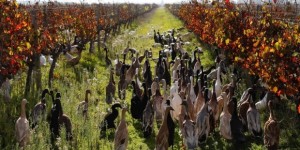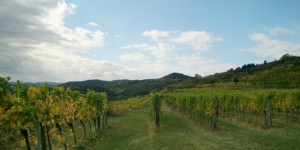
Day 18: 13/10/2011 – A beautiful day to pick
Today was a great day. The weather was perfect and everything was calm. Ferments were well on their way. The winemaking team decided to lend a hand to the harvesting team. It was getting stuffy in the winery with all the CO2 gas being produced from the ferment and we need some fresh air.
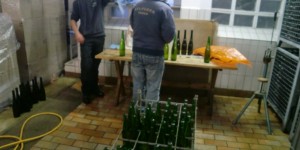
Day 17: 13/10/2011 – Another Cold Spell
There wasn’t much going on today due to the sudden return of the rainy weather. It was freezing cold. Temperature has dropped to seven degrees. In fact, weather was so bad, none of the pickers worked today so they were put on bottling duties.
Over at our end, we decided to take some time to check on the bottles of wine that we have re-corked. To our dismay, the sulphur levels were not at the level we wanted and so we had go through the trouble of taking all the corks out and re-doing everything again. This time, we did a more thorough cleaning of the bottled.
Salomon Winery - recorking
A few pressings were done but other than that, things were significantly quiet. The grapes brought in tasted more diluted but flavours were still acceptable.
In my earlier post, I talked about pressing juice and how it is usually separated from the free-run. The reason for that is that pressing juice is considered of lesser quality as compared to the free-run due to more exposure to oxidation and the flavours not being as pure as the free-run.
Apparently, the practice here at Salomon is to add a portion of the pressing with the free-run to be fermented together so as to impart more texture to the wine. Unlike other wineries that would ferment both separately and blend them later before the bottling process, Salomon has no qualms when it comes to mixing them up together as the belief is that both free-run and pressing are good enough to be put together at the initial stage.
We are looking at about 1/8 of the wine having pressings juice. Perhaps this explains the lack of overt fruity flavours of the wines compared to a new world wine that would shun pressing juice and use them only in the entry level stuff. Thus, this is one of the differences between new world and old world wine-making.
To me, this is a big shift in wine-making for someone who is more familiar with new-world wine-making and that makes me question the teaching that pressing juice is always inferior to free-run. To the old-world guys, it is less of a question of which is better but how both elements can be used to make a better wine.
At the end of the day, the blokes and I had some time off for the night so we went out for a few drinks just to unwind.
The Rain Clears
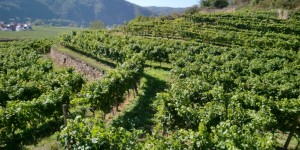
A day off from the vintage gives Shalom a chance to expore Krems area and the village of Dürnstein… although his palate still gets a good workout with visiting sommeliers from Hong Kong.
Day 7 – 02/10/2011
A quiet Sunday for us. The crew decided to go for a walk to the town of Dürnstein. It was a lovely view from the terraced vineyards. It was fascinating to see the vines planted so close to the stone walls. My colleague told me that vines planted next to the walls tend to produce riper grapes due to the heat coming off from the wall at night. It was all sunny and not a cloud in sight.
View from the top of the hill above Durnstein
We climbed to the top of the hill full of vines. Many others did the same. My Swiss colleague remarked that in if we were to walk into like that in the vineyards of Switzerland, we would probably be chased out with a gun-totting man. As we walked down the hill over the other side, a sign in German mentioned that in the past, if a person was caught eating the grapes here and could not pay for what he has eaten, his ear would be cut off. Thank God we don’t have that today.
Hills surrounding Durnstein
At Dürnstein, we took a train to the town of Spitz to catch a ferry ride back to Stein. On the train, we were greeted by a lady who gave us free schnapps to drink. A train ticket for a shot of schnapps sounded like a great deal to us.
Back at the winery, we had a visit from HK Association of Sommeliers. Some amazing vintages were tasted.
Salomon Undhof Steiner Kögl2009, Erste Lager Kremstal DAC, 13.5%abv
A pale yellow tinge. Light fusel aromas and lifted menthol, a flintiness to it with white peach and lemon peel. On the palate is littered with hints of fusel flavours, flint and lemon peel too.
Von Stein 2005 Grüner Veltliner, 14%abv
Pale yellow. A toasty, honeyed botrytis nose in there with hints of confectionary. Quite concentrated. On the palate, the acid is still present and flavours of dried apricots and toast. My most complex Gruner yet. This can lay down another 5-7 years.
Kögl Reserve 1999 Riesling, 13%abv
Pale yellow. Concentrated nose of apricots, petrol, honey and lightly minted. On the palate, acid is still present, beautiful sweet confectionary notes with cold tea. A very long length.
Kögl Reserve 1981 Riesling, ?%abv
Gold colour. Lifted notes of limestone, flint, and petrol. A mintiness to it like 99. Beautifully balanced between acid and flavor. Off dry sweetness that comes from age. Amazingly complex with flavours of honey, cold tea and dried apricots. Beautifully aged with hints of menthol. A treat!
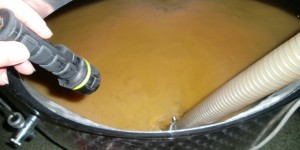
Shalom is in good form, surprisingly not showing signs of fatigue, yet, although it does look like they had a relatively slack day. No doubt some readers will be bewildered at the colour of white wine in tank, before it becomes what we know as wine… Also some good notes on the Salomon current range, both their Austrian and Australian wines… and that leads to an amzing story in itself http://salomonwines.com/estate/index.php?lang=en
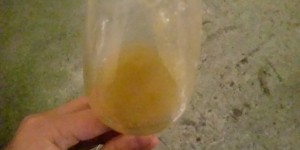
Day 5 30/10/2011
The Zweigelt juice tasted so juicy and the flavours were rimeniscent of raspberry. In Austria and Switzerland, I was told that Strüm or fermenting grape juice is very popular here in. The Zweigelt we had in the tank was probably the best grape juice I have tasted in my entire life.
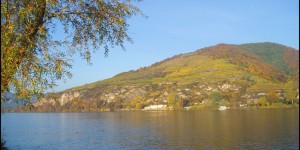
Our indefatigable and studious sommelier, Shalom, is deep amongst the vines and rolled up his sleeves to do vintage at Undhof Salomon, in Krems, Austria, under the tutelage of the legendary Dr Bertold Salomon. Shalom is a dedicated student of wine nearly completed his WSET exams and taking on a Wine MBA next year, and in my estimation, a future Master of Wine in the making.
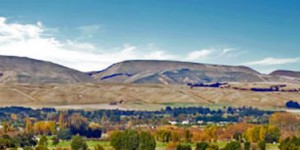
Situated just 5 kilometres east of Martinborough village, Escarpment’s 24 hectares of distinctive alluvial gravel, terraced land stretches out along the banks of the Huangarua River.
Overlooking the vineyard are the Aorangi Ranges, the very hills made famous by Kupe the great Polynesian voyager who discovered New Zealand, according to Maori legend. Kupe left his three canoes, Nga Waka, on top of the range, giving rise to the now familiar landmark of the district, the three flat-topped hills on top of the range, which resemble unturned canoes. This warrior and his story provide the inspiration for the vineyard’s distinctive brand and logo.
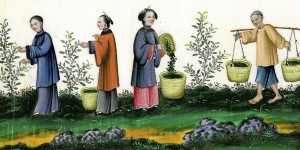
Universally desired, there is a burgeoning thirst for wine knowledge and enjoyment. There is also a growing appreciation for artisan wines and viticulture using sustainable practices, organic and biodynamic principals.
What is Biodynamics? “In essence its traditional agriculture, it’s how it was done before the chemical-age came along, and wine’s been around a lot longer than the chemicals have.” Michael Seresin – Proprietor of Seresin Estate
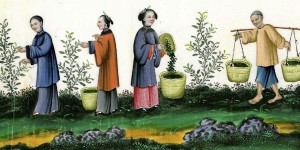
Caroline Frey, winemaker at Chateau La Lagune –A leading Biodynamic Vigneron
Universally desired, there is a burgeoning thirst for wine knowledge and enjoyment. There is also a growing appreciation for artisan wines and viticulture using sustainable practices, organic and biodynamic principals.
Global carbon footprint
The global average carbon footprint per capitais presently 20 tons
The general scientific consensus is that global per capita emission levels must drop to just 1 tonne per person by 2050 to limit global warming to 2 degrees C

